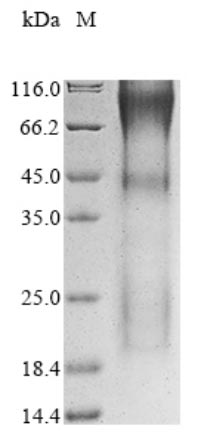Amino acid 1-504 from Human Transcriptional coactivator YAP1 was expressed with 6xHis-tags at the N-terminus in the yeast. The resulting full-length protein is the Recombinant Human Transcriptional coactivator YAP1 (in stock), with a calculated molecular weight of 56.5kDa. Its purity is over 90% as determined by SDS-PAGE. This YAP1 protein can be used as an immunogen for YAP1 antibody synthesis. Also, it can be applied to the studies of some types of cancer since elevated YAP1 expression is implicated in human cancer.
YAP1, also called YAP (Yes-associated protein), is a potent transcription coactivator acting by binding to the TEAD transcription factor. It is involved in many biological processes such as the modulation of organ size, promotion of proliferation and epithelial-mesenchymal transition (EMT), induction of oncogenic transformation in vitro, maintenance of stem cell pluripotency, and tumorigenesis. Increased YAP1 protein levels are associated with many human cancers, especially in the liver.







